AMD Zen 3 Ryzen Deep Dive Review: 5950X, 5900X, 5800X and 5600X Tested
by Dr. Ian Cutress on November 5, 2020 9:01 AM ESTGaming Tests: Final Fantasy XV
Upon arriving to PC, Final Fantasy XV: Windows Edition was given a graphical overhaul as it was ported over from console. As a fantasy RPG with a long history, the fruits of Square-Enix’s successful partnership with NVIDIA are on display. The game uses the internal Luminous Engine, and as with other Final Fantasy games, pushes the imagination of what we can do with the hardware underneath us. To that end, FFXV was one of the first games to promote the use of ‘video game landscape photography’, due in part to the extensive detail even at long range but also with the integration of NVIDIA’s Ansel software, that allowed for super-resolution imagery and post-processing effects to be applied.
In preparation for the launch of the game, Square Enix opted to release a standalone benchmark. Using the Final Fantasy XV standalone benchmark gives us a lengthy standardized sequence to record, although it should be noted that its heavy use of NVIDIA technology means that the Maximum setting has problems - it renders items off screen. To get around this, we use the standard preset which does not have these issues. We use the following settings:
- 720p Standard, 1080p Standard, 4K Standard, 8K Standard
For automation, the title accepts command line inputs for both resolution and settings, and then auto-quits when finished. As with the other benchmarks, we do as many runs until 10 minutes per resolution/setting combination has passed, and then take averages. Realistically, because of the length of this test, this equates to two runs per setting.
| AnandTech | Low Resolution Low Quality |
Medium Resolution Low Quality |
High Resolution Low Quality |
Medium Resolution Max Quality |
| Average FPS | 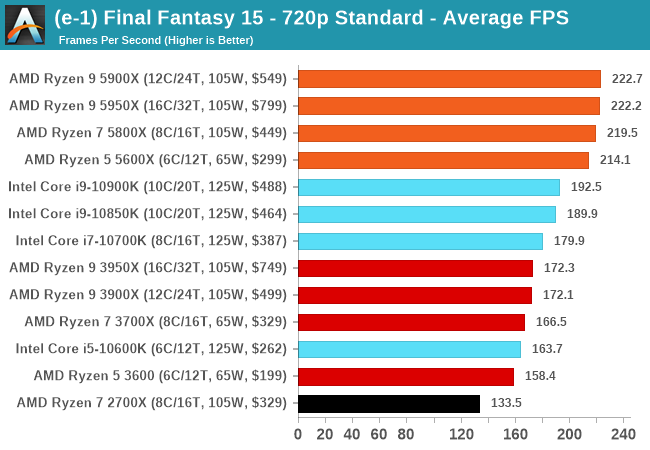 |
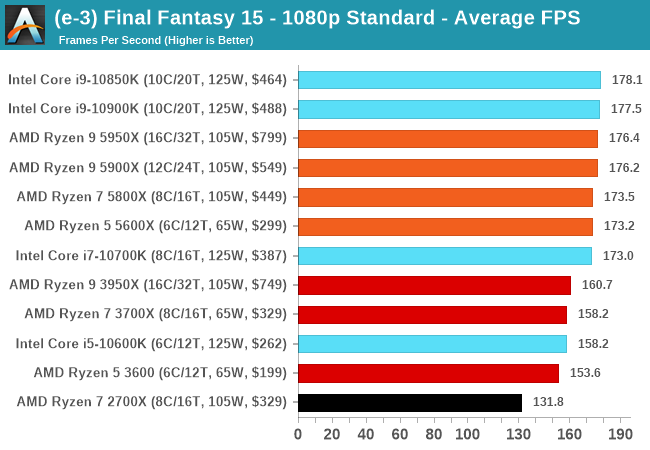 |
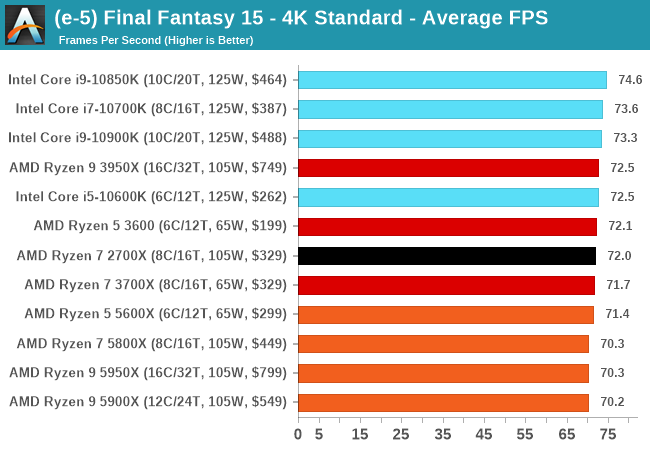 |
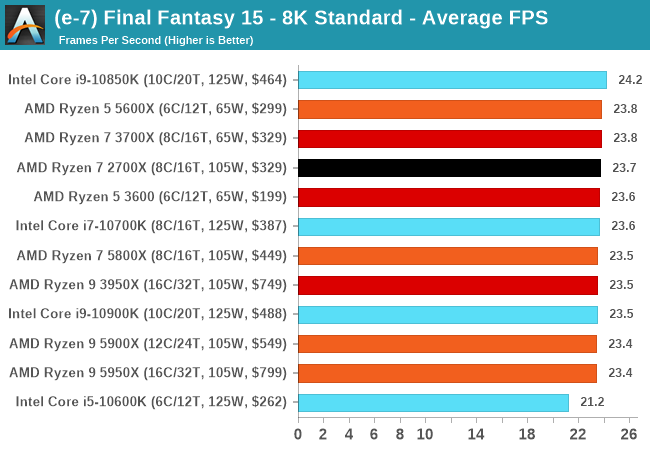 |
| 95th Percentile | 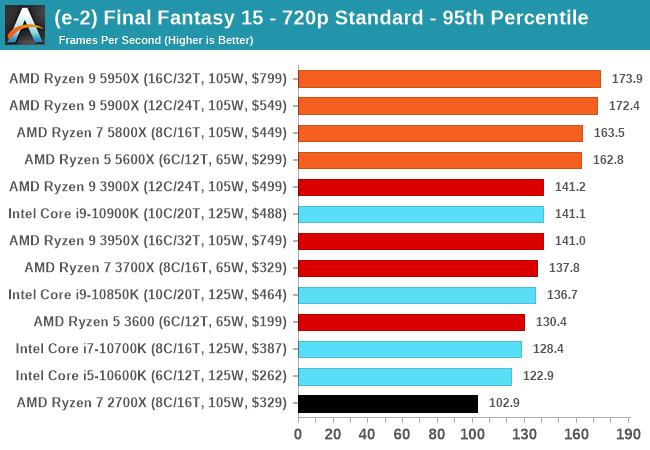 |
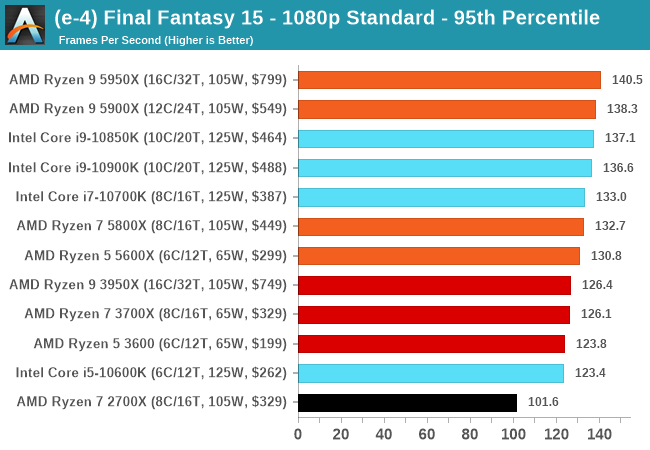 |
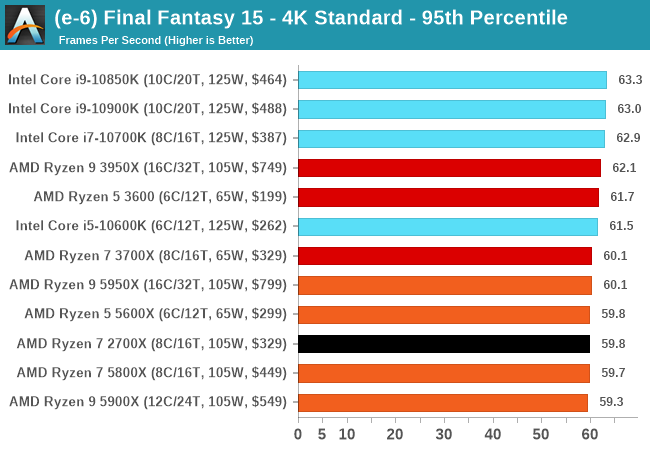 |
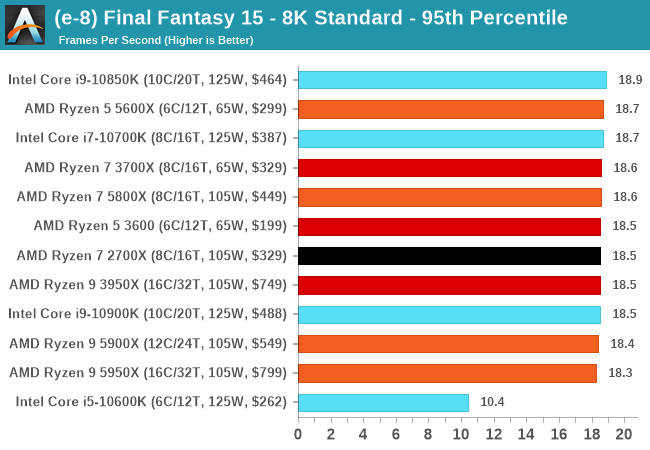 |
All of our benchmark results can also be found in our benchmark engine, Bench.












339 Comments
View All Comments
Qasar - Tuesday, November 17, 2020 - link
no, but fake posts are.feka1ity - Tuesday, November 17, 2020 - link
sure, everything faster than new amede is fake for fanboizIketh - Monday, November 16, 2020 - link
was there a performance/watt metric anywhere in this article? how many memory controllers on each chip?peevee - Tuesday, November 17, 2020 - link
As MT vs ST tests clearly show, there is not enough power and/or memory bandwidth on AM4 for 16 cores anymore.Hoping for a 4-channel DDR5 mass-market platform next.
One 8-core chiplet, one graphics chiplet (similar to 5600 XT, and working together with an additional AMD graphics card), 4 channels of DDR5 to support that, preferably as SODIMM slots right on the CPU package for smallest latency and power consumption possible (and making a cheap MB possible)... I can dream, can I? It should have been this generation, I would have ordered it already.
RobJoy - Thursday, November 19, 2020 - link
Same or better performance than Intel for the same price, with PCIe 4.0 for uber fast drives?Where do I sign?
Bring it on.
ssshenoy - Tuesday, December 15, 2020 - link
How do you conclude that this product line is superior to Tiger Lake when there are no measurements that compare these two? All the Intel to AMD comparisons are the old Skylake core on 14 nm vs. the latest Zen 3 core on 7 nm. Am I missing something here?JSyrup - Wednesday, January 20, 2021 - link
Is there a reason why the 5800X outperforms both the 5900X and 5950X in some games? Could it have something to do with 1 CCX vs 2 CCXs?JSyrup - Wednesday, April 7, 2021 - link
*CCDsI got it now. For the best of both worlds, go for the 5950X. Then, if you play games, disable 1 CCD in BIOS or leave both CCDs enabled if you do productivity. This is how to maximise performance and prevent unexpected performance drops.
Sgtkeebler - Tuesday, May 11, 2021 - link
On RDR why do higher resolutions get higher FPS than 1080p?